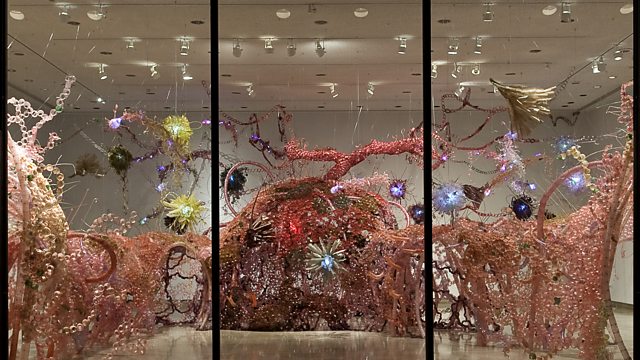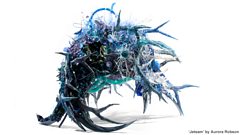Plasticity
Plasticity in our brains, everyday objects and debris. With artist Aurora Robson, nanochemist Sujata Kundu and neuroscientist Takao Hensch.
Isn鈥檛 it remarkable that everyday objects, especially those made from modern plastics, can bend, squash, stretch, and generally 鈥榮hape-shift鈥� in a number of ways? So how is that possible? Bridget Kendall and guests consider plasticity from several viewpoints: Aurora Robson is an artist who works with plastic garbage, Sujata Kundu a nanochemist who analyses plasticity at the level of atoms and electrons, and Takao Hensch a neuroscientist investigating whether it's possible to recreate youth-like plasticity in an adult brain.
(Photo: The Great Indoors: art installation by Aurora Robson)
Last on
More episodes
Next
Clip
-
![]()
Art from plastic trash
Duration: 00:57
Chapters
-
Aurora Robson
Art from plastic waste
Duration: 13:01
-
Sujata Kundu
The magic of material plasticity
Duration: 08:14
-
60 Second Idea
Why purple colour would make plastics greener
Duration: 04:06
-
Takao Hensch
The secrets of brain plasticity
Duration: 13:00
Aurora Robson

And you can see some more of Aurora's transformative art in the gallery on the right hand side of the page.
Sujata Kundu

Sujata Kundu is a Teaching Fellow in the Department of Materials at Imperial College, London. A nanochemist, both literally and professionally, Suze is also a passionate science communicator, giving regular public lectures at schools, universities and science festivals where she loves sharing the secret science of everyday things.
Takao Hensch
Takao Hensch is joint professor of Neurology, Harvard Medical School at Boston Children鈥檚 Hospital, and professor of Molecular and Cellular Biology at Harvard鈥檚 Center for Brain Science. His research focuses on critical periods in brain development. By applying cellular and molecular biology techniques to neural systems, his lab identified pivotal inhibitory circuits that orchestrate structural and functional rewiring of connections in response to early sensory experience.
Sixty Second Idea to Change the World

The green, red and blue dyes in plastic milk bottle tops
used in many countries are a real problem, says Sujata Kundu. The colours are
hard to separate from the main plastic polymer and, as green tops are the most
popular in the UK, the recycled plastic tends to have an un-appetizing green
tinge. So Sujata wants us either to switch to colourless bottle tops, or,
better still, change to an exciting colour, such as purple, so that recycled
plastics become widely accepted.
Photo by Shan Pillay
Broadcasts
- Mon 18 May 2015 01:05GMT成人快手 World Service Online
- Tue 19 May 2015 08:05GMT成人快手 World Service Online
What makes good customer service in the 21st century?
Podcast
-
![]()
The Forum
The programme that explains the present by exploring the past




